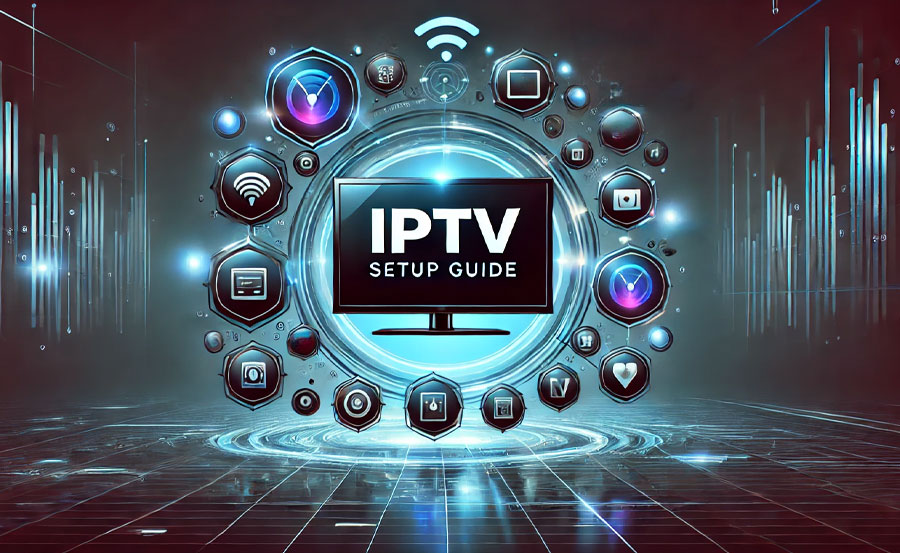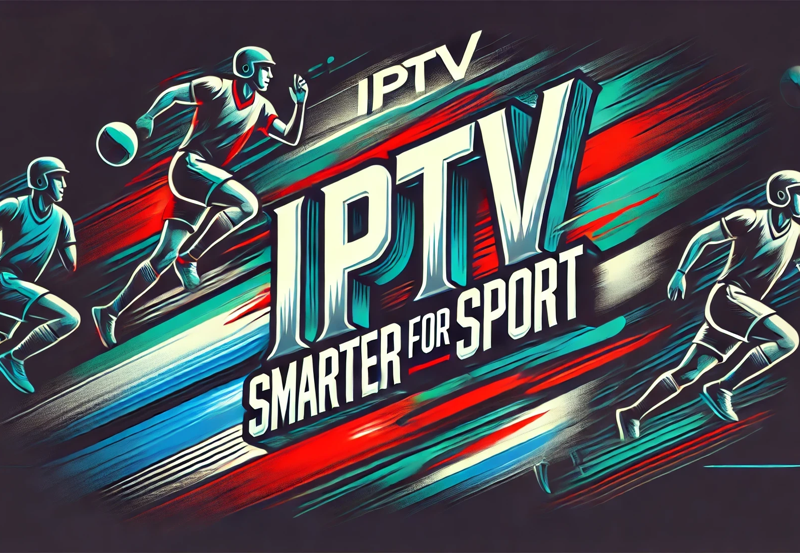IPTV, or Internet Protocol Television, is a digital television broadcasting system that delivers content via internet networks. This technology transmits television programming as data packets, which are reassembled on the viewer’s device. IPTV offers numerous advantages, including access to a wide range of channels, on-demand content, and interactive features.
Buy 6 Months IPTV for Endless Entertainment
Users can enjoy high-quality video and audio across multiple devices, such as smartphones, tablets, and smart TVs. A significant benefit of IPTV is its customization capabilities. Subscribers can select from various packages tailored to their viewing preferences, encompassing sports, movies, news, and international channels.
IPTV services typically include features like video-on-demand, catch-up TV, and digital video recording (DVR), enabling users to watch content at their convenience. Additional interactive features may include electronic program guides, parental controls, and multi-screen viewing options. IPTV represents a modern approach to television content consumption, offering a personalized and immersive viewing experience.
It provides greater flexibility and control over content selection and viewing schedules compared to traditional cable or satellite television services. As internet infrastructure continues to improve, IPTV is likely to become an increasingly popular option for television content delivery.
Key Takeaways
- IPTV is a television service that is delivered over the internet, allowing users to stream live TV, on-demand content, and more.
- When choosing an IPTV provider, consider factors such as channel selection, video quality, customer support, and compatibility with your devices.
- Setting up your IPTV equipment involves connecting your IPTV box or device to your TV and internet router, and following the provider’s setup instructions.
- Connecting to the internet is essential for IPTV service, so ensure you have a stable and high-speed internet connection for the best viewing experience.
- Configuring your IPTV service may involve entering your subscription details, adjusting video settings, and exploring additional features such as parental controls and multi-screen viewing options.
Choosing the Right IPTV Provider
When selecting an IPTV provider, it’s essential to consider several factors to ensure you’re getting the best service for your needs. First and foremost, you’ll want to research the available providers in your area and compare their subscription packages, channel offerings, and pricing. Look for providers that offer a wide range of channels and on-demand content that align with your viewing preferences.
Additionally, consider the quality of the service, including the reliability of the streams and the availability of high-definition content. Another crucial aspect to consider when choosing an IPTV provider is the compatibility with your devices. Ensure that the provider offers support for various devices, such as smart TVs, streaming boxes, smartphones, and tablets.
This will allow you to access your IPTV service on multiple screens and enjoy a seamless viewing experience across different platforms. Furthermore, look for providers that offer user-friendly interfaces and intuitive navigation to make the viewing experience more enjoyable. Lastly, consider the customer support and technical assistance provided by the IPTV provider.
Look for companies that offer responsive customer service and reliable technical support to address any issues or concerns that may arise. Reading customer reviews and testimonials can also provide valuable insights into the quality of service offered by different IPTV providers. By carefully evaluating these factors, you can choose an IPTV provider that meets your specific needs and provides a satisfying television viewing experience.
Setting Up Your IPTV Equipment
Setting up your IPTV equipment is a relatively straightforward process that can be completed with minimal technical expertise. The first step is to ensure that you have all the necessary equipment, including a compatible streaming device or set-top box, as well as a reliable internet connection. Once you have the required hardware in place, you can proceed to connect your streaming device to your television using an HDMI cable or other appropriate connection method.
Next, you’ll need to power on your streaming device and follow the on-screen instructions to set up your IPTV service. This typically involves entering your subscription credentials and activating your account through the provider’s website or app. Once your account is activated, you can start browsing through the available channels and on-demand content offered by your IPTV service.
It’s important to ensure that your streaming device is connected to your home network either via Wi-Fi or Ethernet to ensure a stable and reliable connection. Additionally, you may need to update the firmware or software on your streaming device to ensure compatibility with the IPTV service. By following these steps and carefully following the setup instructions provided by your IPTV provider, you can quickly and easily set up your equipment and start enjoying your favorite television content.
Connecting to the Internet
A stable and high-speed internet connection is essential for a smooth and uninterrupted IPTV viewing experience. When connecting to the internet for IPTV service, it’s important to ensure that you have a reliable network with sufficient bandwidth to support streaming high-definition content. If possible, connect your streaming device or set-top box to your home network using an Ethernet cable for the most stable connection.
However, if a wired connection is not feasible, you can also use a Wi-Fi connection, provided that it offers strong signal strength and minimal interference. To optimize your internet connection for IPTV streaming, consider using a dedicated router or access point specifically for your streaming devices. This can help prioritize traffic for streaming content and minimize potential network congestion that could affect your viewing experience.
Additionally, ensure that your internet service provider offers sufficient bandwidth to support high-definition streaming without buffering or interruptions. It’s also important to consider potential network security measures when connecting to the internet for IPTV service. Ensure that your home network is secured with a strong password and encryption to prevent unauthorized access and protect your personal information.
By taking these steps to connect to the internet securely and efficiently, you can enjoy a seamless IPTV viewing experience with minimal disruptions.
Configuring Your IPTV Service
Once your IPTV equipment is set up and connected to the internet, you’ll need to configure your IPTV service to ensure optimal performance and usability. Start by accessing the settings menu on your streaming device or set-top box to customize your viewing preferences and adjust any necessary parameters. This may include setting up parental controls, adjusting audio and video settings, and configuring any additional features offered by your IPTV provider.
Additionally, you may need to activate any premium channels or on-demand services included in your subscription package. This typically involves entering activation codes or credentials provided by your IPTV provider through their website or app. By following these activation steps, you can unlock access to additional content and features that enhance your viewing experience.
It’s also important to regularly update the software or firmware on your streaming device to ensure compatibility with the latest IPTV service offerings. Check for updates through the device’s settings menu or app store and install any available updates to keep your IPTV service running smoothly. By taking these steps to configure your IPTV service, you can personalize your viewing experience and access all the features and content included in your subscription package.
Exploring IPTV Features and Options
IPTV offers a wide range of features and options that enhance the television viewing experience for users. One of the key features of IPTV is its ability to provide on-demand content, allowing users to watch their favorite shows and movies at their convenience. Additionally, many IPTV providers offer catch-up TV services that allow users to access previously aired programs for a limited time after they have aired live.
Another popular feature of IPTV is digital video recording (DVR), which allows users to record live TV programs and watch them later. This feature provides added flexibility for users who may not be able to watch their favorite shows at their scheduled air time. Furthermore, many IPTV services offer interactive features such as electronic program guides (EPG) that provide information about upcoming programs and allow users to easily navigate through available channels and content.
Some providers also offer multi-screen viewing options that allow users to watch multiple channels simultaneously on different devices. In addition to these features, many IPTV providers offer premium add-on channels and packages that cater to specific interests such as sports, movies, or international programming. By exploring these features and options offered by IPTV providers, users can customize their viewing experience and access a wide range of content tailored to their preferences.
Troubleshooting Common Issues
While IPTV offers a modern and convenient way to access television content, users may encounter common issues that can affect their viewing experience. One common issue is buffering or freezing during playback, which can be caused by insufficient bandwidth or network congestion. To address this issue, users can try connecting their streaming device to their home network using an Ethernet cable for a more stable connection or upgrading their internet service plan for higher bandwidth.
Another common issue is audio or video quality issues, which may be caused by compatibility issues with the streaming device or set-top box. Users can try updating the firmware or software on their device or adjusting audio and video settings in the device’s settings menu to improve quality. Additionally, users may encounter issues with accessing specific channels or on-demand content due to activation or subscription issues.
In this case, users should contact their IPTV provider’s customer support for assistance in resolving these issues. By troubleshooting these common issues and seeking assistance from their IPTV provider when needed, users can ensure a smooth and enjoyable viewing experience with their IPTV service. In conclusion, IPTV offers a modern and flexible way to access television content over the internet, providing a wide range of features and options that cater to individual viewing preferences.
By understanding how IPTV works, choosing the right provider, setting up equipment, connecting to the internet, configuring services, exploring features and options, and troubleshooting common issues, users can enjoy a seamless and personalized television viewing experience with IPTV.
If you’re in the process of setting up your IPTV television service and looking for the best streaming device to enhance your viewing experience, you might find the article “Firestick vs. Other Streaming Devices: Best for IPTV” particularly useful. This comprehensive guide compares various streaming devices, including the popular Amazon Firestick, to help you determine which device best suits your IPTV needs. You can read more about it by visiting Firestick vs. Other Streaming Devices: Best for IPTV. This article will provide you with detailed insights and comparisons, making your setup process smoother and more informed.




